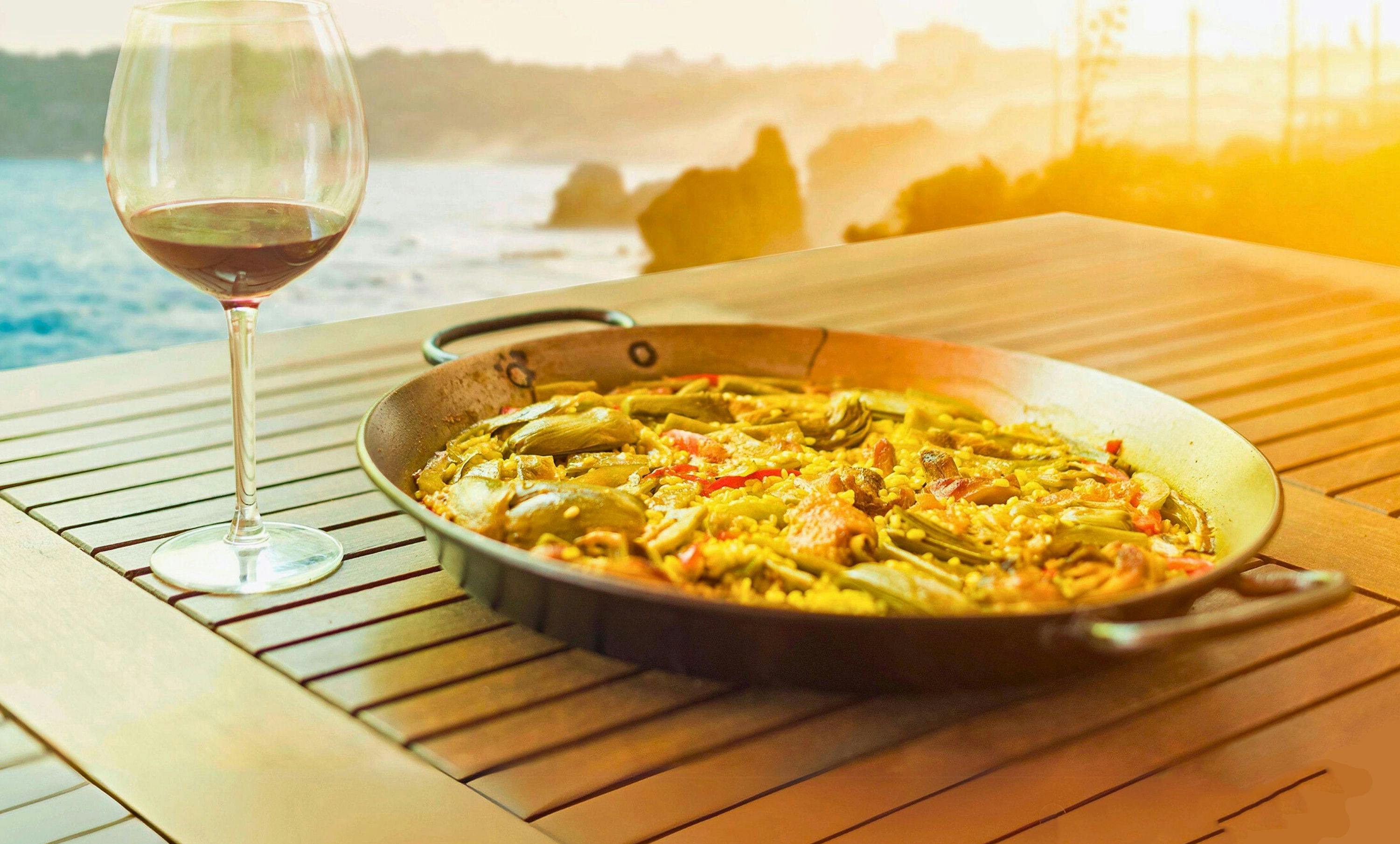In Valencia, Spain, to sample paella is to know the soul of this seaport city
Each stony step through Valencia’s Old Town fired up my senses.
Sweet, floral orange blossoms gave way to smoky, sulfurous gunpowder as marching bands collided with pop-pop-pops of firecrackers. It was the beginning of March, and Spain’s third-largest city was ramping up for Las Fallas, a UNESCO-recognized festival that celebrates the arrival of spring. Hundreds of fallas, grandiose satirical sculptures made of wood and papier-mâché, are displayed across the city before meeting their demise in a fiery finale.

And then there was and is paella, pictured at top, the one-pan wonder that is reason enough to visit this historic city on the Mediterranean. Paella was the quiet connector of this magical spectacle in Valencia.
After two years of Zoom meet-ups, I was visiting my friend Carmen to check out her new life to see whether it lived up to the rave reviews. I stayed near her home in El Carmen, Valencia’s Old Town, a 2,000-year-old medieval quarter where winding cobblestone streets lead to open squares of ancient Gothic architecture full of modern life. My trip coincided with Las Fallas, a centuries-old tradition of revelry that takes over the city for the first part of March. So much for escaping the frenzy of my Manhattan home.
Food, culture and history wrapped into one dish
Paella takes its name from the pan, called a paellera, but in Valencia, it represents much more than a cooking vessel. It’s a symbol of tradition, and it’s a ritual that unites the past with today’s convivial, community-centric culture.
I wanted to learn what makes paella special. Even amid the boisterous festivities of Las Fallas, I didn’t have to look hard to find the rice, vegetable and meat and/seafood meal: I found it in the ancient alleys of Old Town Valencia, the trendy neighborhood of Ruzafa and the futuristic City of Arts and Sciences.
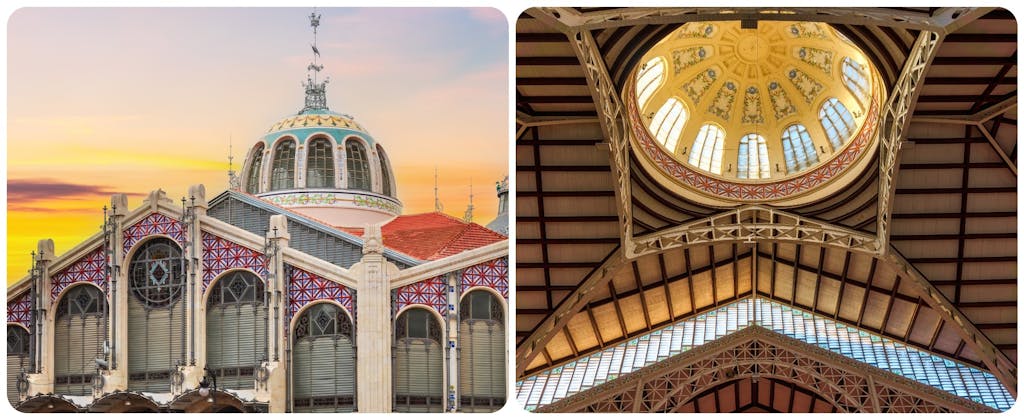
Valencia has long connected land and sea through vital maritime trade routes, thriving alongside the renowned Silk Road from the 2nd century B.C./B.C.E. to the 18th century. Valencia remains one of Europe’s busiest ports.
My journey began at the Mercat Central (the Valencian iteration of what would be called Mercado Central in Spanish). The structure of the market, which dates to 1928 and is known as the “Cathedral of the Senses,” features ornate ironwork typical of early 20th-century Modernist architecture, emphasizing open spaces and minimalist design. It also showcases such Art Nouveau details as colorful ceramic tiles, stained glass windows, and an awe-inspiring glass dome. Two weathervanes – a parrot and a fish – adorn the dome’s exterior, symbolizing Valencia’s connection to land and sea.
The indoor market has more than 250 stalls, and a mere three-minute stroll was enough to spark instant hunger pangs, thanks to piles of oranges, succulent oysters on ice and paper cones of jamón Serrano. Judicious doses of Aqua de Valencia, a cocktail made with oranges from Valencia, along cava (a golden sparkling wine) vodka, gin, ice and, if needed, sugar.
I gravitated toward one paella stall, although its version lacked rabbit. I had read that authentic paella Valenciana must include chicken and rabbit, so I asked the young woman working there about it. “Los Turistas,” she said, rocking her arms as if cradling a pet bunny and indicating our furry friend was not on the menu.
Paella Valenciana is tradition of pride
You will find infinite variations of paella, including regional and inventive spins across Spain, as varied as land and sea (sometimes called “seafood and mixed”), and truffle and foie gras.
When it comes to an authentic version, Valencians are very clear on what’s traditional. Fish and shellfish? “Absolutely out of the question.” For dinner? “Never. Always lunch.” On a stove? “Open flame is a must!”
Paella is thought to have originated in the 18th century as a communal meal for laborers in the rice fields of Valencia’s Albufera region. The workers used whatever ingredients they could gather and cooked them over an open flame.
The authentic preparation contains roasted rabbit and chicken, flat white beans, green beans, tomatoes, saffron, olive oil, salt, short-grain rice and snails. “Everything else,” celebrity chef Jose Andres says, “is just rice (arroz de). Not true paella Valenciana.”
To observe the traditional cooking process, my friend Carmen recommended Casa Carmela on the Mediterranean beachfront of Malvarrosa, a 15-minute cab from the Old Town. The restaurant has been making paella for more than a century, and its kitchen blends state-of-the-art design with the traditional ritual of cooking over a wood fire.
I watched with wonder as an Instagrammable row of long grills – each with orange wood flames – blazed under endless paelleras, cooking a variety of dishes, including paella Valenciana and Spiny Lobster paella for lunchtime service. Wood-smoked orange and saffron-infused aromas filled the kitchen air.
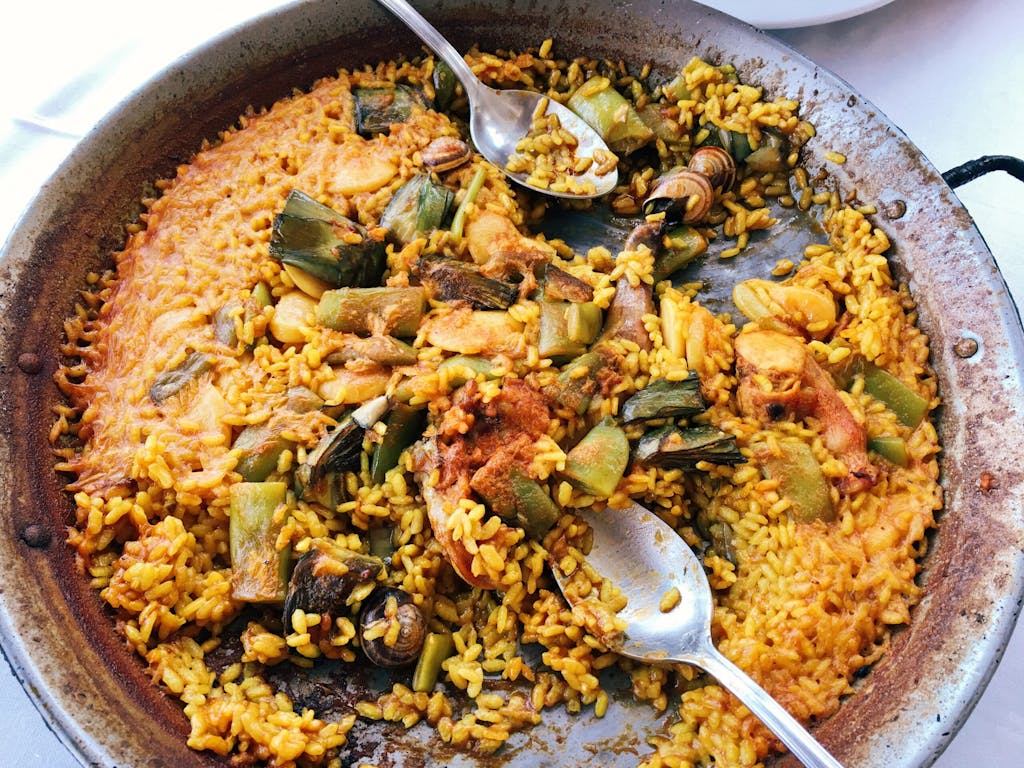
We had pre-ordered the Paella Valenciana, as one must do when in the birthplace of paella. Its arrival was a ceremony unto itself: Placed at the center of the table and served with a wooden spoon to get the prized socarrat (the caramelized, charred layer at the bottom of the pan). A half-inch rice layer ensured the balance of tender grains and crispy socarrat.
Some of the meat was unfamiliar to me, so I asked the waiter for clarification. He pointed out the chicken, duck and rabbit. I thought about the bunny-cradling young woman from the market, but I was ready to trust tradition and let go of inhibition. Each spoonful became a culinary adventure. The warm, saffron-tinged bomba rice held firm against the well-roasted rabbit and chicken pieces. The tiny snails were chewy, tender and earthy. Scraping the socarrat was a final treat, absorbing all the rich flavors of a slow-cooked meal.
Tradition meets modern life

The next day, our pilgrimage led us on a 40-minute walk to the City of Arts and Sciences, Santiago Calatrava and Félix Candela’s architectural masterpiece. The futuristic complex consists of six ultramodern structures, all surrounded by expansive reflective pools.
The Hemisférico’s eye-shaped design and the Museo de las Ciencias Príncipe Felipe’s skeletal structure created an otherworldly atmosphere that has made the site a favorite for sci-fi film productions, including HBO’s “Westworld” and, from Disney Plus, “Andor” of the “Star Wars” series.
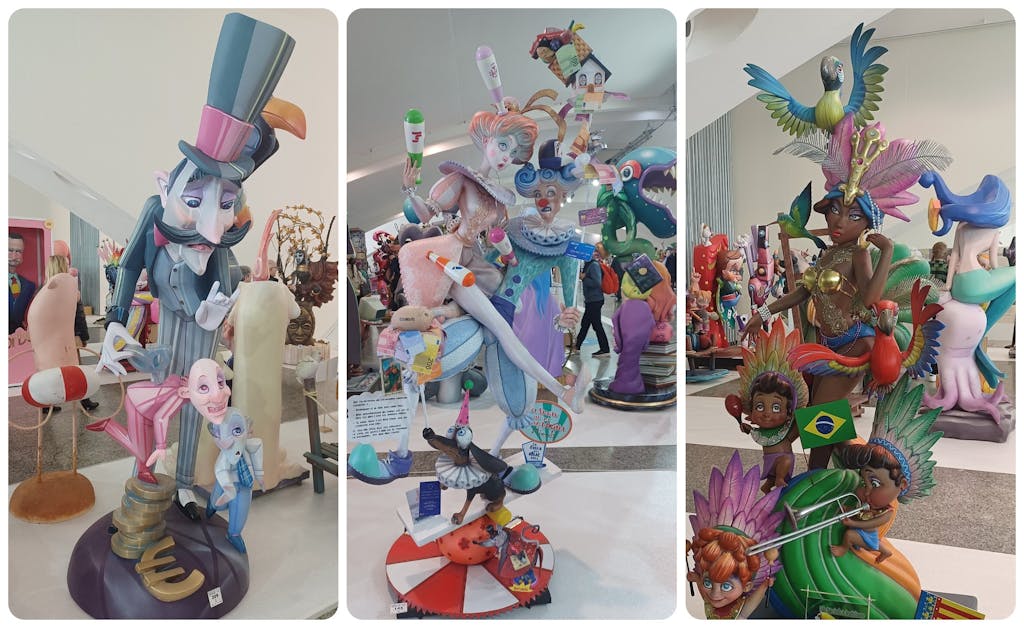
At the Museum’s Ninot Exhibition, also at the City of Arts and Sciences, hundreds of ninots (smaller sculptures) had their own commentary on paella, including the whimsical “Paella Police” and condemnation of celebrity chefs pushing boundaries with haughty ingredients deemed disrespectful to traditional roots. Like paella, these ninots were destined to be scorched by fire on La Cremà, the final night of the festival when Valencia says adiós to the fallas and burns them in the streets.
After a short ride on metro from the City of Arts and Sciences, we arrived in the hip neighborhood of Ruzafa, stopping for lunch at El Rodamón de Russafa, a sleek spot offering a fusion of Asian, French and Latin American flavors. Tables were full of locals engaging in conversation across communal pans of paella. Afterward, we shopped at Gnomo, a concept store selling necklaces, novelties and more.
Paella was seemingly everywhere in this city, but I still wondered whether it made its way into residents’ homes. I asked Gnomo’s Esther Martín about her paella practices.
“My husband makes it every Sunday for the family,” she said. It reminded me of backyard weekend grilling in America, sans the 2,000-year-old Spanish tradition.
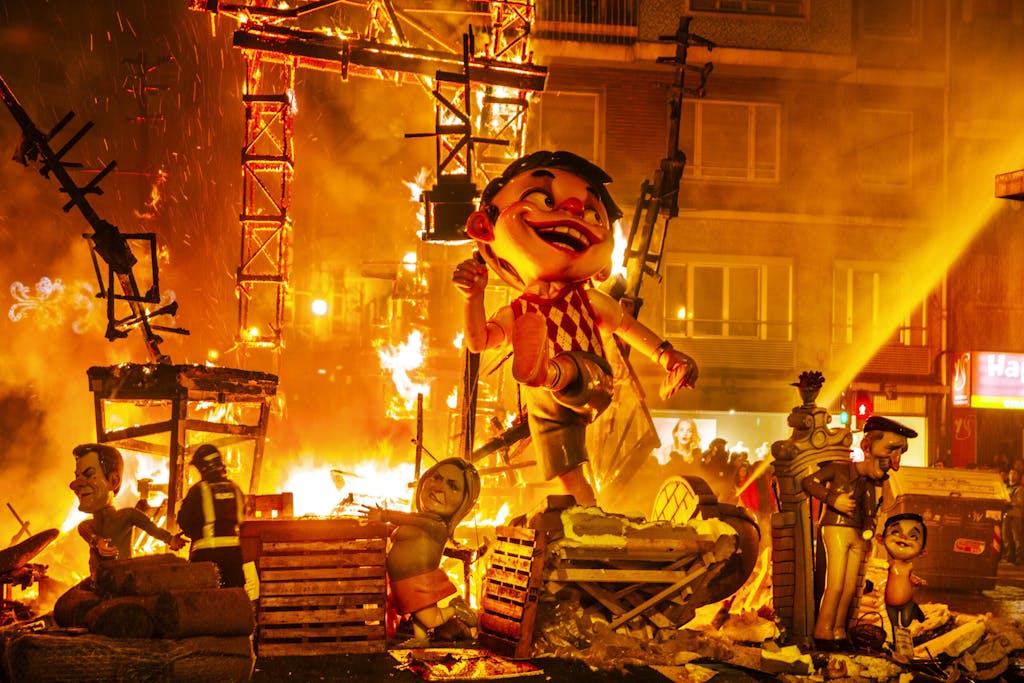
On the afternoon walk back to El Carmen, the city-wide Fallas party engulfed us with the boundless energy of parades, partying and kids tossing firecrackers at our feet. Where cars once parked, friends gathered and open fires cooked paella. Although I left the city before La Cremà, I was already hooked on all things Valenciana: its people, its pride and, of course, its paella.
It finally became clear why Valencians call their beloved home “la millor terreta del món,” – the best little place in the world. It’s not just about a place or geography; it’s about a deep connection to one another, to the land and the sea, and to a way of life larger than ourselves.
